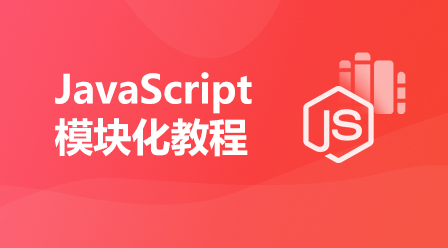JavaScript data types
JavaScript Data Type
Data Type
There are 5 simple data types (also called basic data types) in JavaScript: Undefined, Null, Boolean, Number and String. There is also a complex data type - Object. Object is essentially composed of a set of unordered name-value pairs.
typeof Operator
Since JavaScript is loosely typed, there needs to be a way to detect the data type of a given variable - typeof is the operator responsible for providing provider-side information. Using the typeof operator on a value may return one of the following strings:
● "undefined" - if the value is undefined;
● "boolean" - if the value is Boolean Value;
● "string"——If the value is a string;
● "number"——If the value is a numeric value;
● "object"— —If this value is an object or null;
● "function"——If this value is a function;
Undefined type
Undefined type has only one value, that is, special undefined. When a variable is declared using var but is not initialized, the value of the variable is undefined, for example:
var message;
alert(message == undefined) //true
Null type
Null type is the second data type with only one value. This special value is null. From a logical point of view, the null value represents a null object pointer, and this is why "object" is returned when using the typeof operator to detect null, for example:
var car = null;
alert(typeof car); // "object"
If the defined variable is going to be used to save the object in the future, it is best to initialize the variable to null instead of other values. In this way, as long as the null value is directly detected, you can know whether the corresponding variable has saved a reference to an object, for example:
if(car != null)
{ -262 specifies that the test for their equality should return true.
Alert(undefined == null); //true
Boolean type
This type has only two literal values: true and false. These two values are not the same thing as numeric values, so true does not necessarily equal 1 and false does not necessarily equal 0.
Although there are only two literal values of the Boolean type, all types of values in JavaScript have values equivalent to these two Boolean values. To convert a value to its corresponding Boolean value, you can call the type conversion function Boolean(), for example:
var message = 'Hello World'; var messageAsBoolean = Boolean(message);
In this example, the string message is converted into a Boolean value, which is stored in the messageAsBoolean variable. The Boolean() function can be called on a value of any data type and will always return a Boolean value. As for whether the returned value is true or false, it depends on the data type of the value to be converted and its actual value. The following table gives the conversion rules for various data types and their objects.
These conversion rules are very important for understanding flow control statements (such as if statements) and automatically performing corresponding Boolean conversions. For example:
var message = 'Hello World';
if(message)
{
alert("Value is true");
}When you run this example, a warning box will be displayed because the characters The string message is automatically converted into the corresponding Boolean value (true). Because of this automatically performed Boolean conversion, it is crucial to know exactly what variables are used in flow control statements.
Number type
This type is used to represent integers and floating point values, and there is also a special value, NaN (not a number). This value is used to indicate that an operand that is supposed to return a value does not return a value (so that an error is not thrown). For example, in other programming languages, dividing any numeric value by zero results in an error that stops code execution. But in JavaScript, any value divided by 0 will return NaN, so it will not affect the execution of other code.
NaN itself has two extraordinary characteristics. First, any operation involving NaN (such as NaN/10) will return NaN, which may cause problems in multi-step calculations. Second, NaN is not equal to any value, including NaN itself. For example, the following code returns false.
alert(NaN == NaN); //false
There is an isNaN() function in JavaScript. This function accepts a parameter, which can be of any type, and the function will help us determine whether this parameter is "not a numeric value". After isNaN() receives a value, it will try to convert the value into a numeric value. Some values that are not numeric are converted directly to numeric values, such as the string "10" or a Boolean value. Any value that cannot be converted to a numeric value will cause this function to return true. For example:
alert(isNaN(NaN)); //true
alert(isNaN(10)); //false(10是一个数值)
alert(isNaN("10")); //false(可能被转换为数值10)
alert(isNaN("blue")); //true(不能被转换为数值)
alert(isNaN(true)); //false(可能被转换为数值1)There are three functions that can convert non-numeric values into numeric values: Number(), parseInt() and parseFloat(). The first function, the conversion function Number(), can be used for any data type, while the other two functions are specifically used to convert strings into numbers. These three functions will return different results for the same input.
The conversion rules of the Number() function are as follows:
● If it is a Boolean value, true and false will be replaced with 1 and 0 respectively
● If it is a numeric value, Just simply pass in and return
● If it is a null value, return 0
● If it is undefined, return NaN
● If it is a string, follow the following rules:
○ If the string contains only numbers, convert it to a decimal value, that is, "1" will become 1, "123" will become 123, and "011" will become 11 (leading 0 is ignored)
○If the string contains a valid floating point format, such as "1.1", it will be converted to the corresponding floating point number (similarly, leading 0 will also be ignored)
○If the string contains a valid hexadecimal format, such as "0xf", convert it to a decimal integer value of the same size
○If the string is empty, convert it is 0
○If the string contains characters other than the above format, convert it to NaN
●If it is an object, call the valueOf() method of the object, and then follow The previous rule transforms the returned value. If the result of the conversion is NaN, the object's toString() method is called, and then the returned string value is converted according to the previous rules.
var num1 = Number("Hello World"); //NaN
var num2 = Number(""); //0
var num3 = Number("000011"); //11
var num4 = Number(true); //1Since the Number() function is complex and unreasonable when converting strings, the parseInt() function is more commonly used when processing integers. When the parseInt() function converts a string, it depends more on whether it conforms to the numerical pattern. It ignores leading spaces in the string until it finds the first non-space character. If the first string is not a numeric character or a negative sign, parseInt() will return NaN; that is, using parseInt() to convert an empty string will return NaN. If the first character is a numeric character, praseInt() will continue parsing the second character until all subsequent characters have been parsed or a non-numeric character is encountered. For example, "1234blue" will be converted to 1234, and "22.5" will be converted to 22, because the decimal point is not a valid numeric character.
If the first character in the string is a numeric character, parseInt() can also recognize various integer formats (i.e. decimal, octal, hexadecimal). In order to better understand the conversion rules of the parseInt() function, some examples are given below
var num1 = parseInt("1234blue"); //1234
var num2 = parseInt(""); //NaN
var num3 = parseInt("0xA"); //10(十六进制)
var num4 = parseInt("22.5"); //22
var num5 = parseInt("070"); //56(八进制)
var num6 = parseInt("70"); //70
var num7 = parseInt("10",2); //2(按二进制解析)
var num8 = parseInt("10",8); //8(按八进制解析)
var num9 = parseInt("10",10); //10(按十进制解析)
var num10 = parseInt("10",16); //16(按十六进制解析)
var num11 = parseInt("AF"); //56(八进制)
var num12 = parseInt("AF",16); //175 var num1 = parseFloat("1234blue"); //1234
var num2 = parseFloat("0xA"); //0
var num3 = parseFloat("22.5"); //22.5
var num4 = parseFloat("22.34.5"); //22.34
var num5 = parseFloat("0908.5"); //908.5 var found = true. ; var foundAsString = found.toString(); //String "true"
##
var num = 10; alert(num.toString()); //"10" alert(num.toString(2)); //"1010" alert(num.toString(8)); //"12" alert(num.toString(10)); //"10" alert(num.toString(16)); //"a"
It can be seen from this example that by specifying the base, the toString() method will change the output value. The value 10 can be converted into different numerical formats during output depending on the base.
When you don’t know whether the value to be converted is null or undefined, you can also use the conversion function String(). This function can convert any type of value into a string. The String() function follows the following conversion rules:
● If the value has a toString() method, the method is called (without parameters) and the corresponding result is returned
● If the value is null, then Return "null"
● If the value is undefined, return "undefined"
var value1 = 10; var value2 = true; var value3 = null; var value4; alert(String(value1)); //"10" alert(String(value2)); //"true" alert(String(value3)); //"null" alert(String(value4)); //"undefined"
Object type
An object is actually a collection of data and functions. Objects can be created by executing the new operator followed by the name of the type of object to be created. You can create a custom object by creating an instance of the Object type and adding properties and/or methods to it.
var o = new Object();
Each instance of Object has the following properties and methods:
● constructor - holds the object used to create the current Object functions
● hasOwnProperty(propertyName) - used to check whether the given property exists in the current object instance (not in the prototype of the instance). Among them, the property name (propertyName) as a parameter must be specified in the form of a string (for example: o.hasOwnProperty("name"))
● isPrototypeOf(object) - used to check whether the incoming object is The prototype of another object
● propertyIsEnumerable(propertyName)-used to check whether the given property can be enumerated using a for-in statement
● toString()-returns the object's String representation
● valueOf()——Returns the string, numerical or Boolean representation of the object. Usually the same as the return value of the toString() method.














